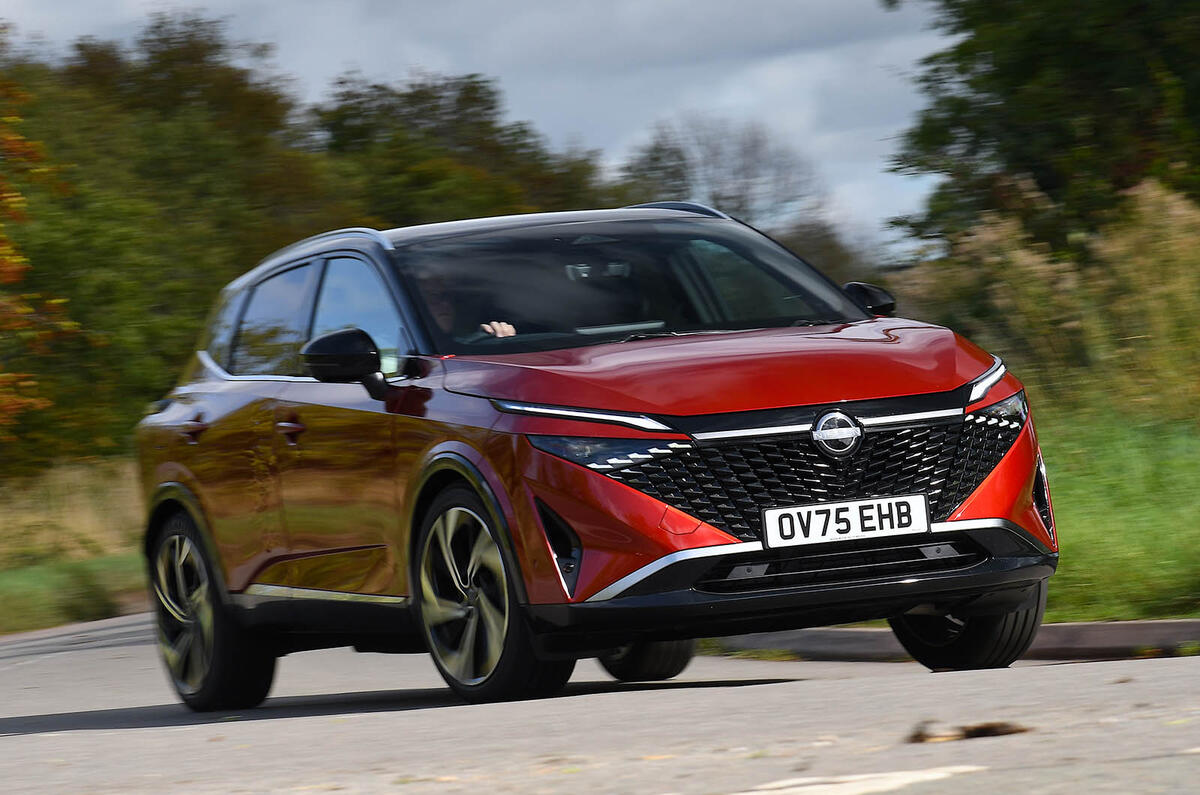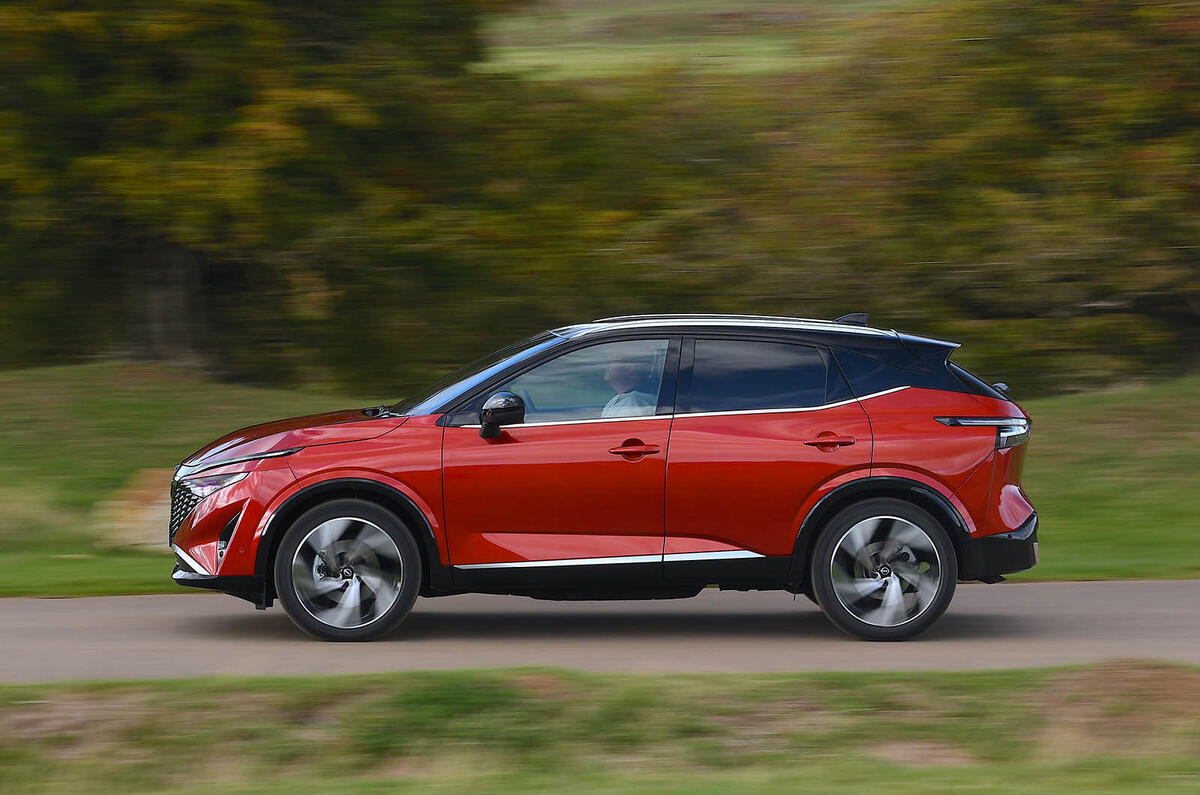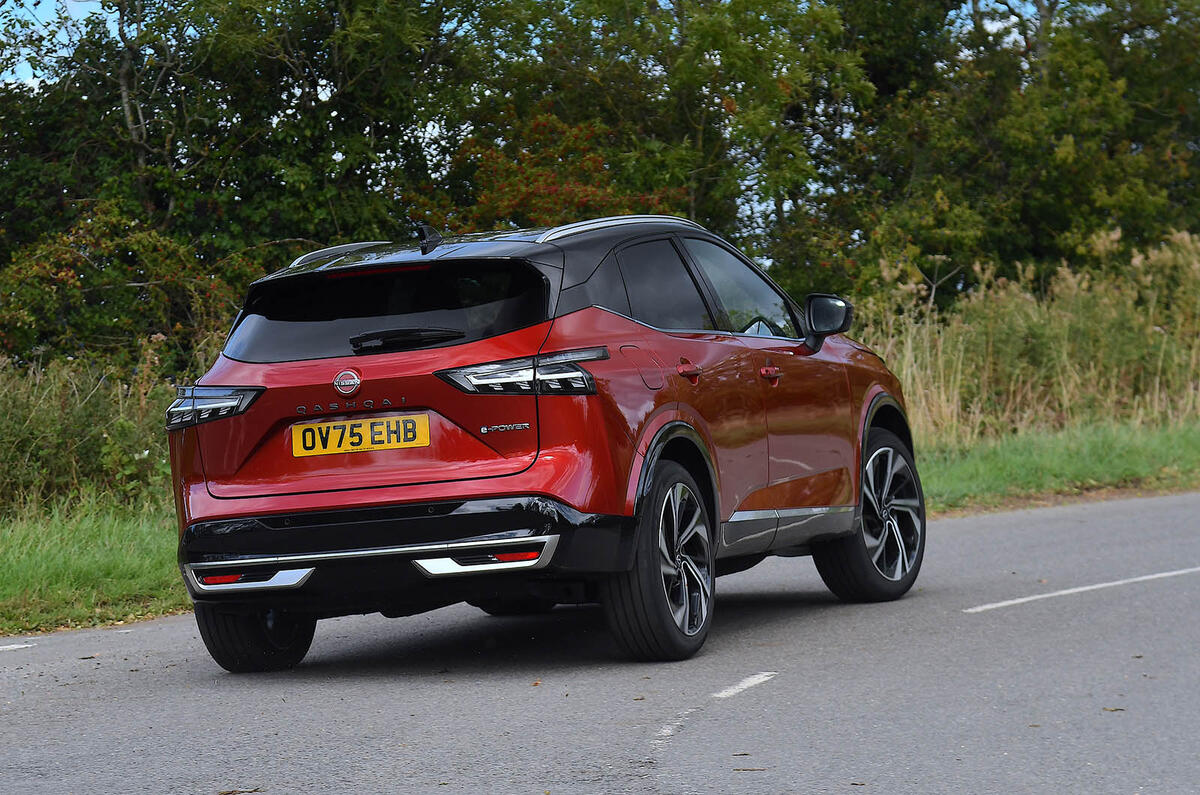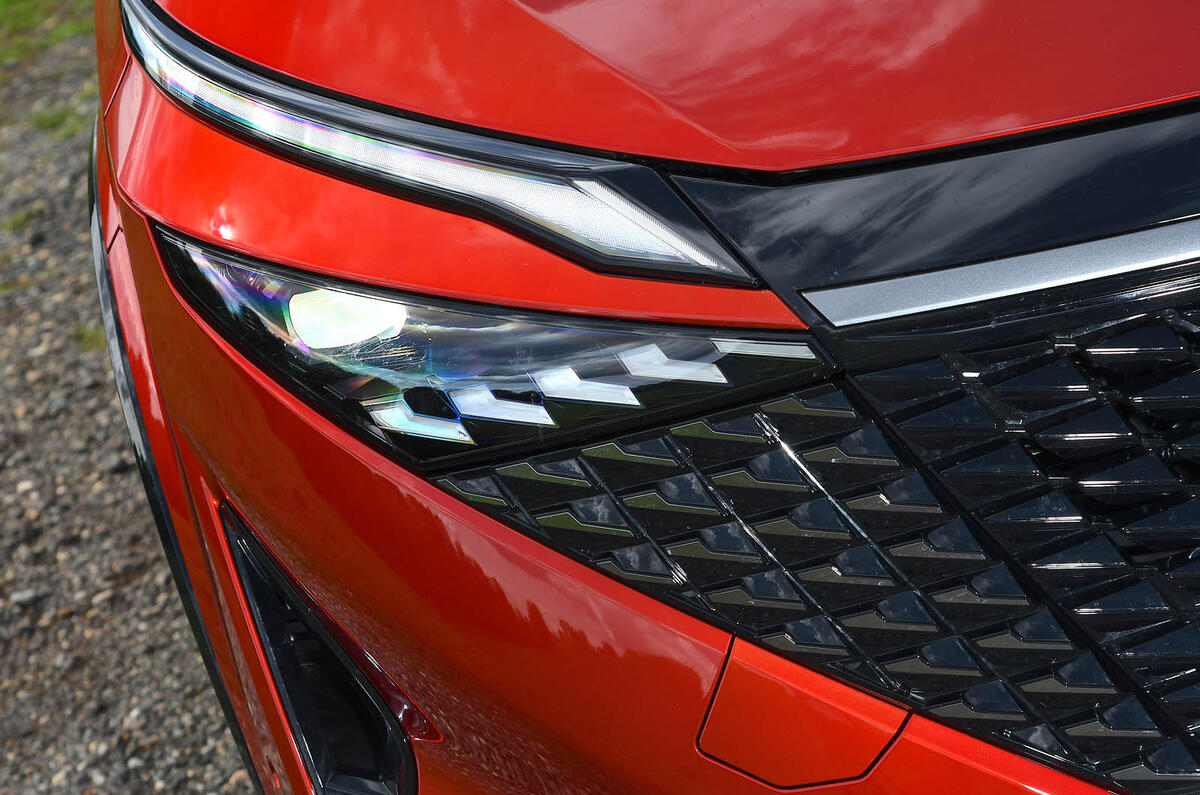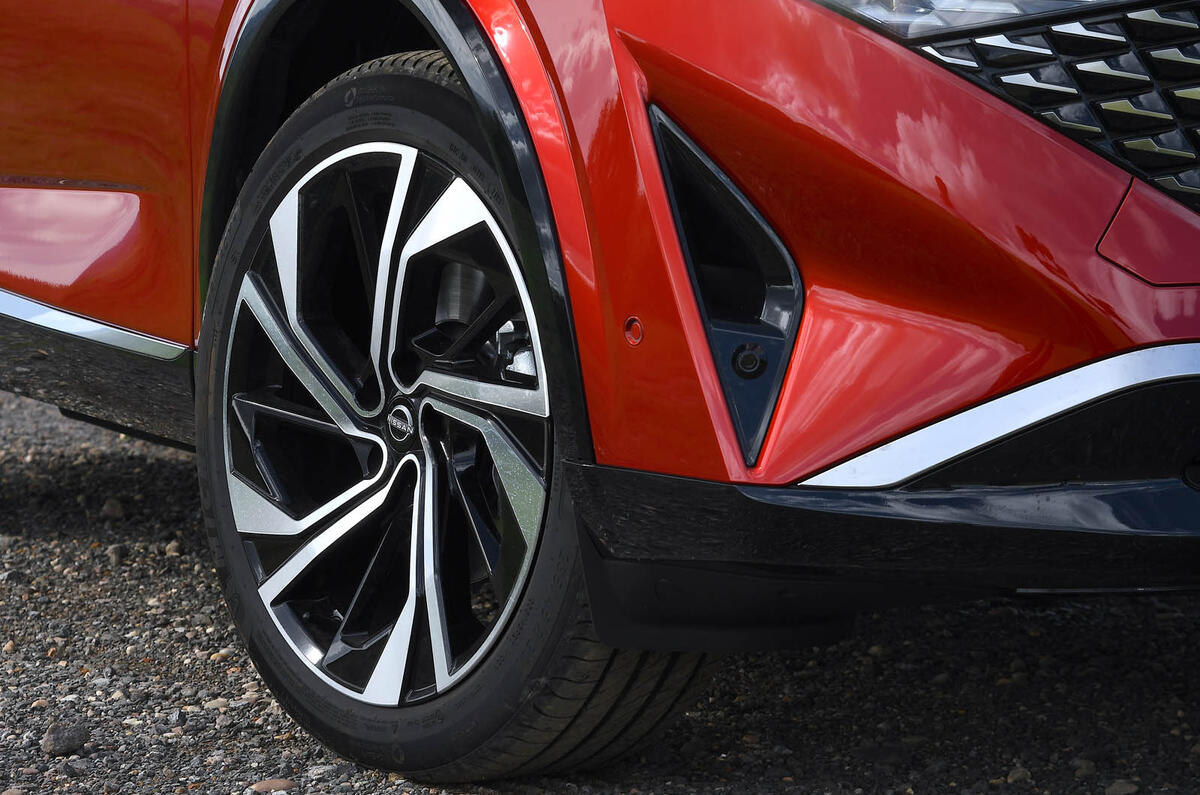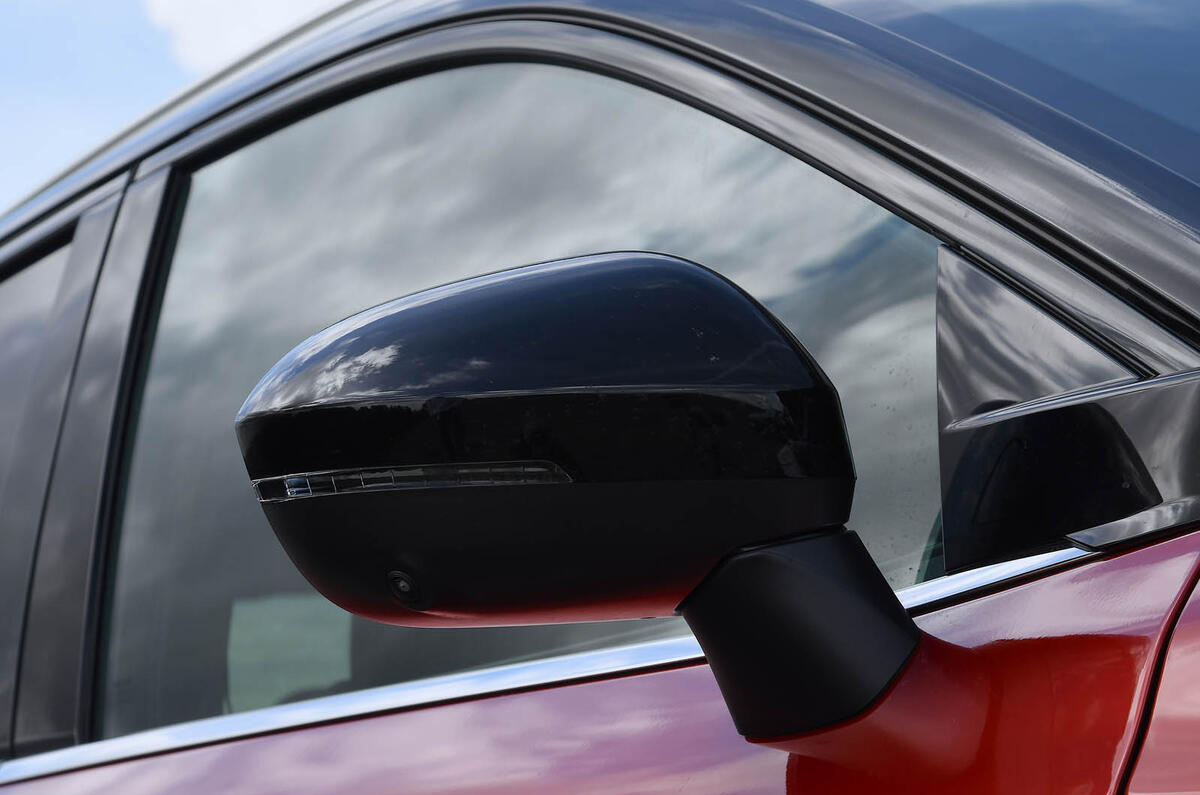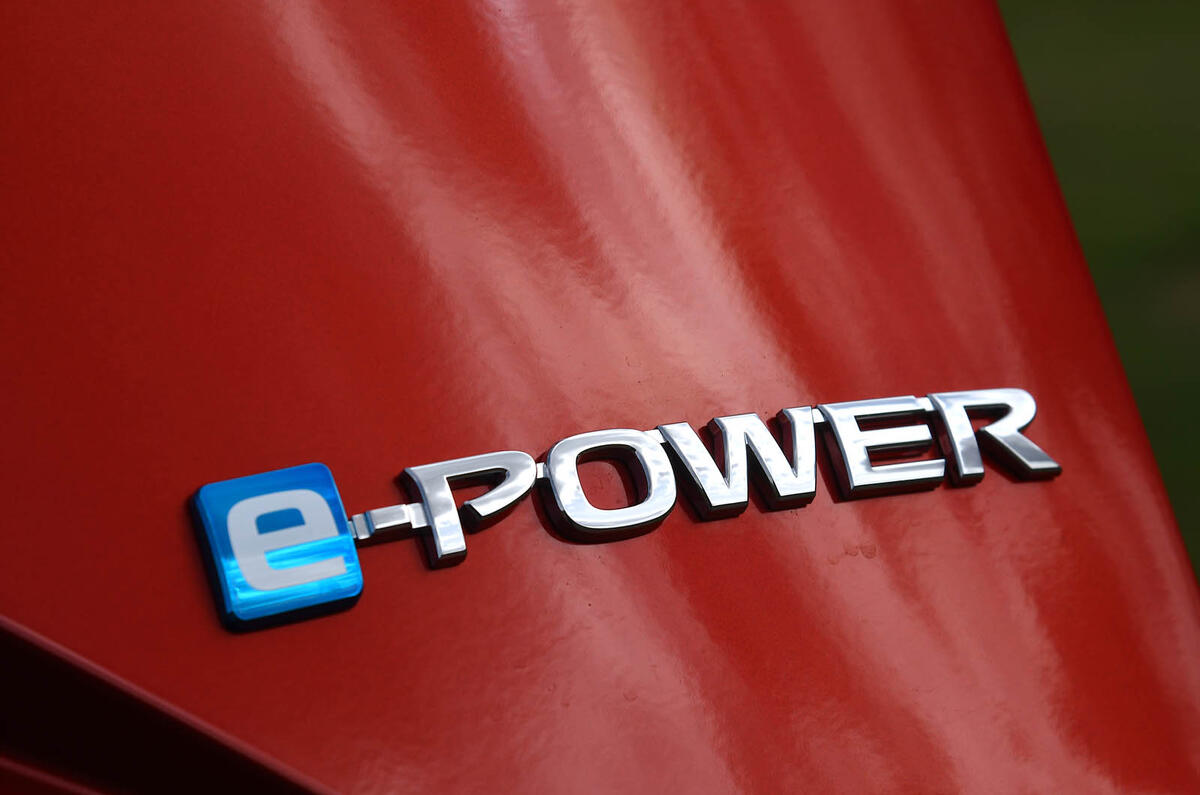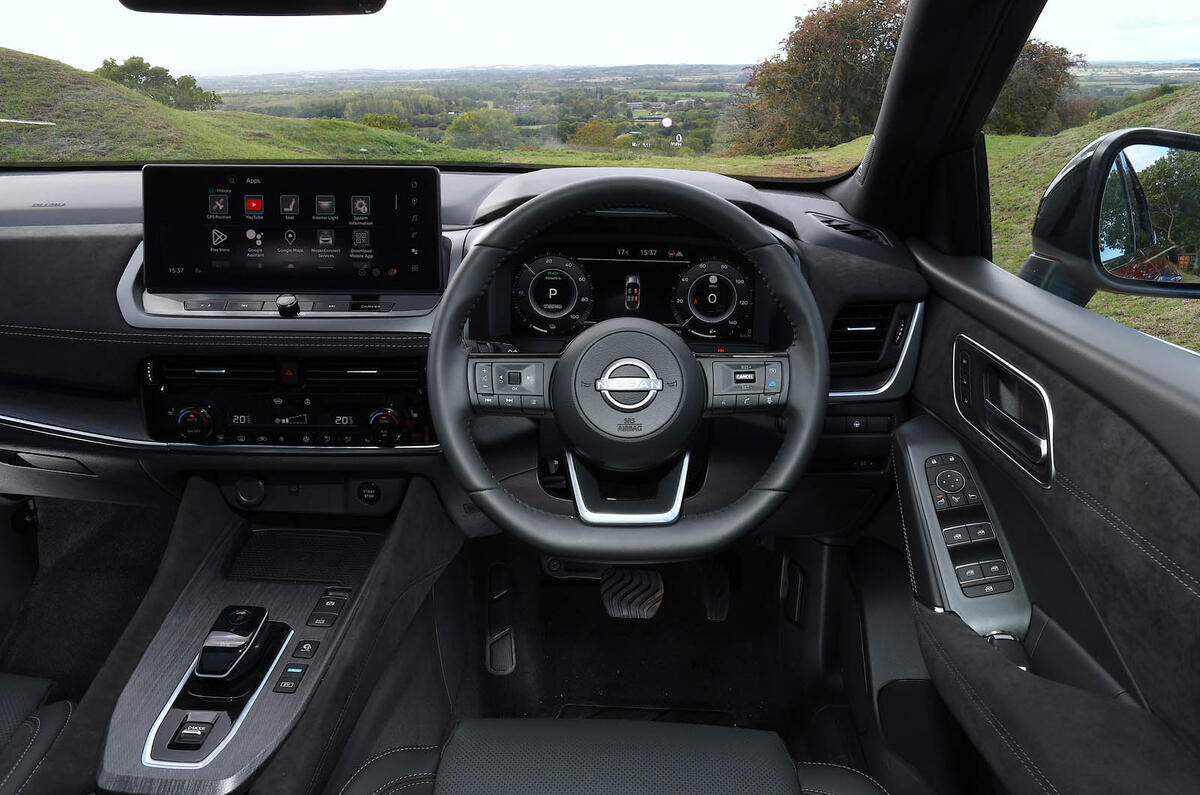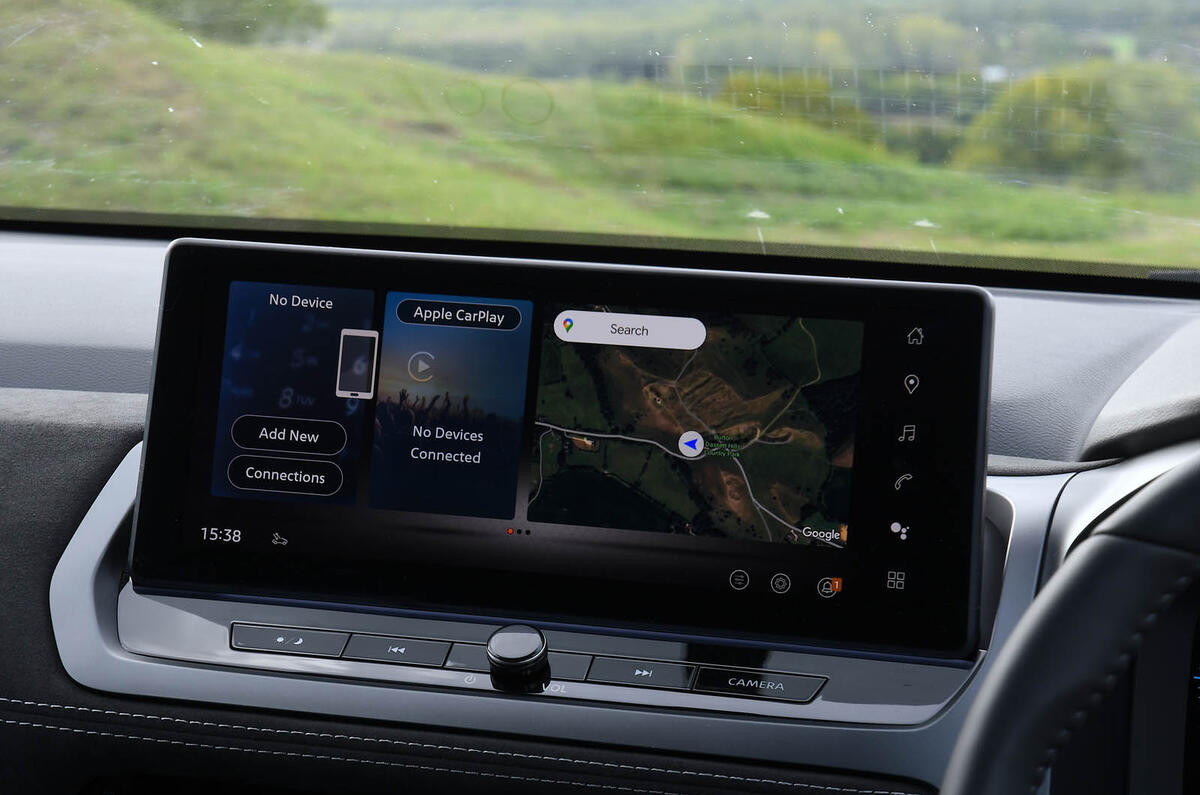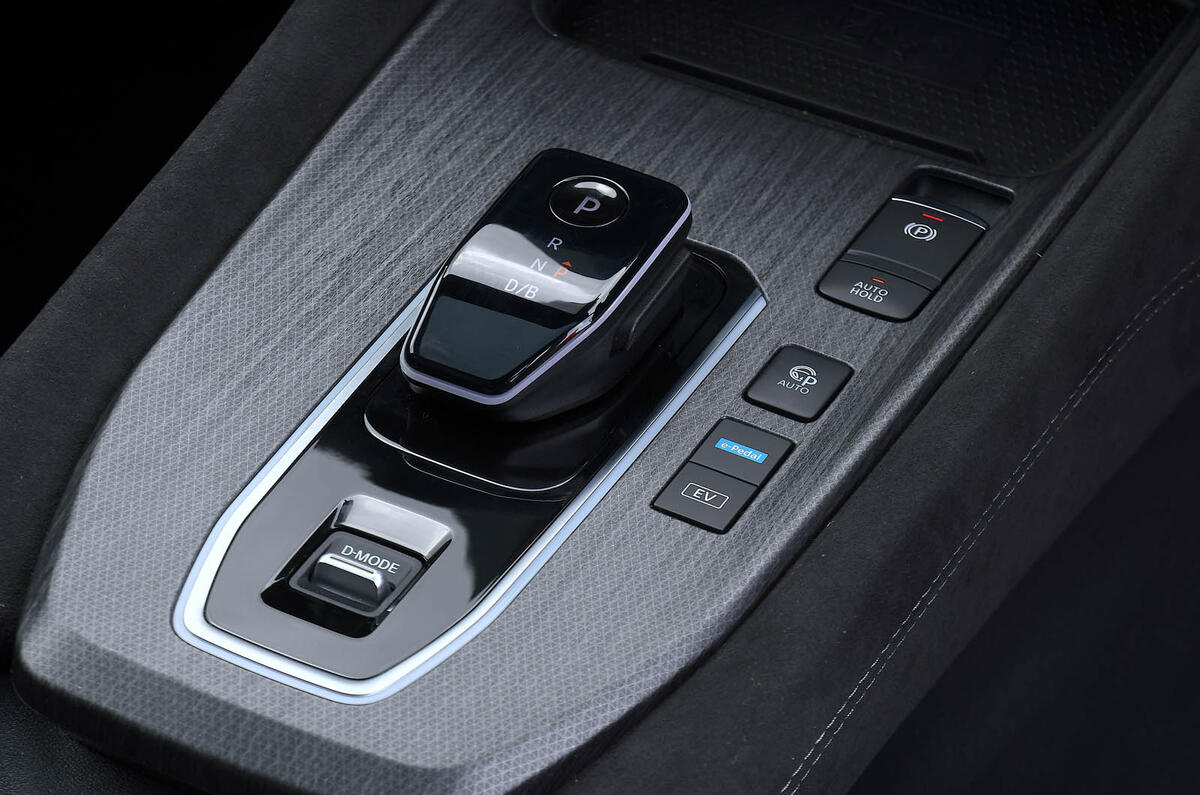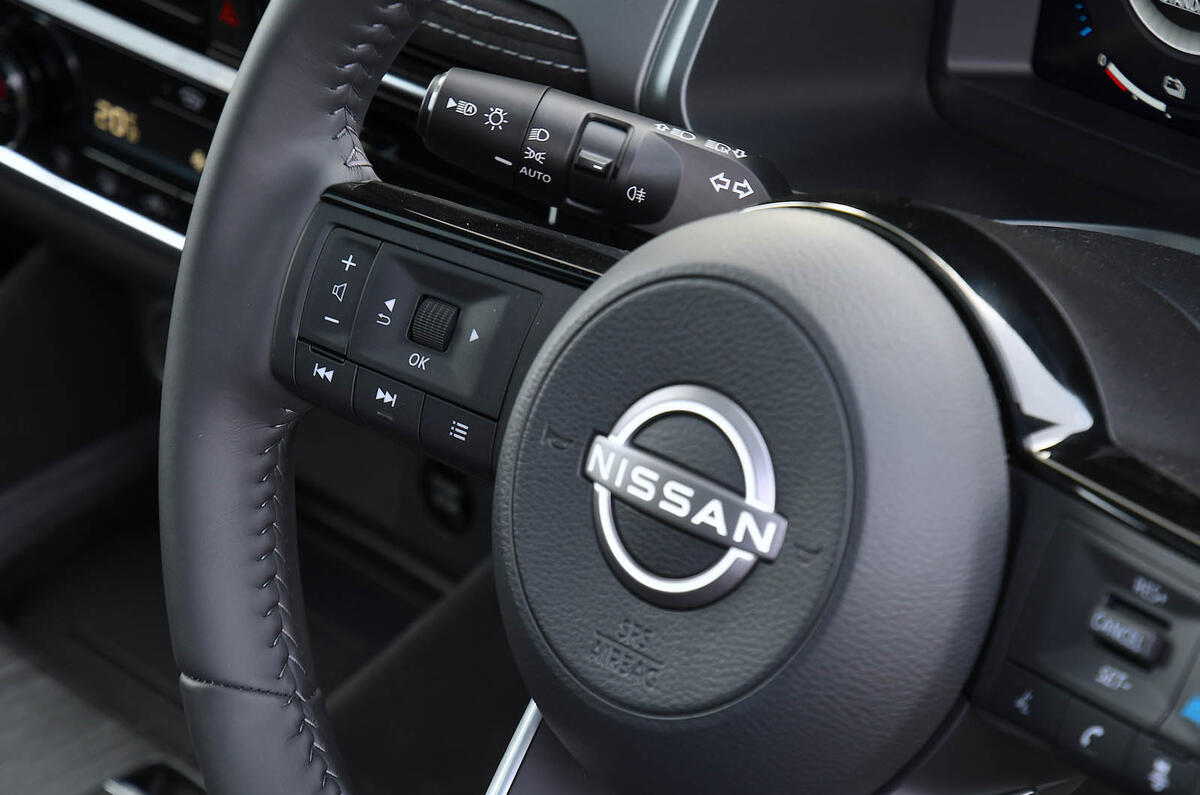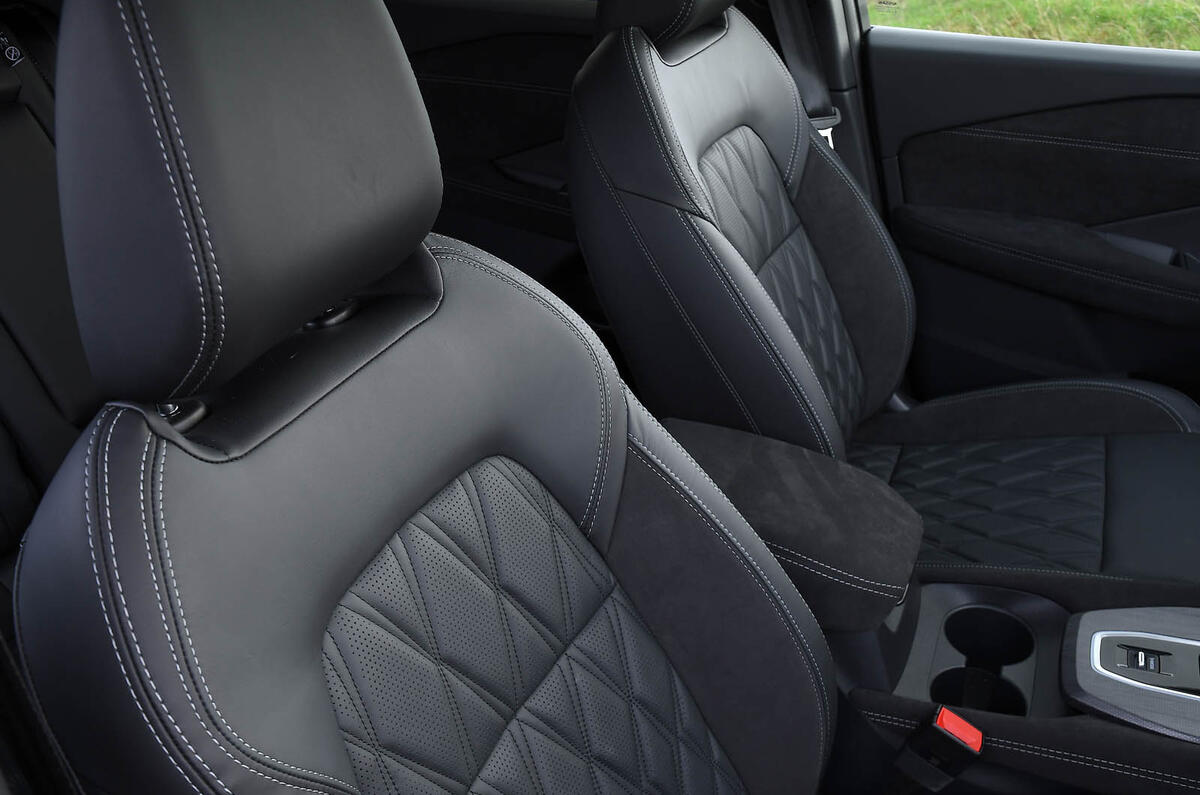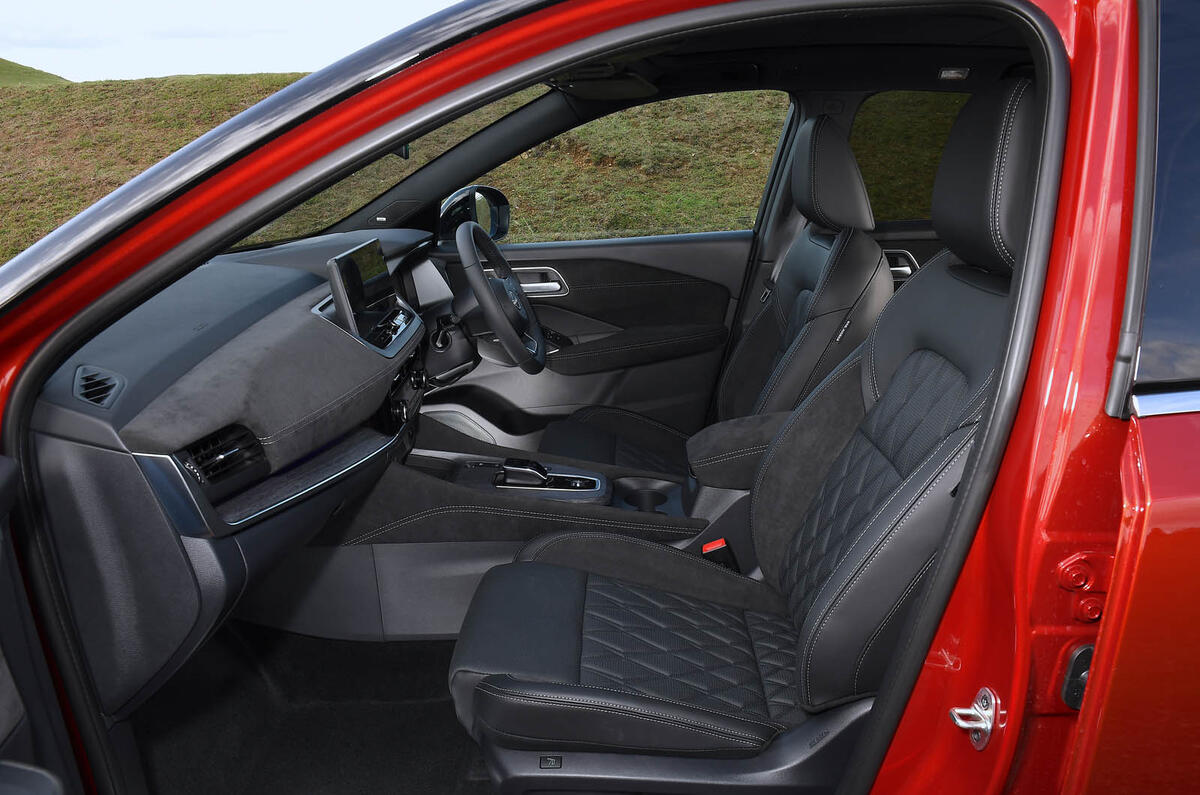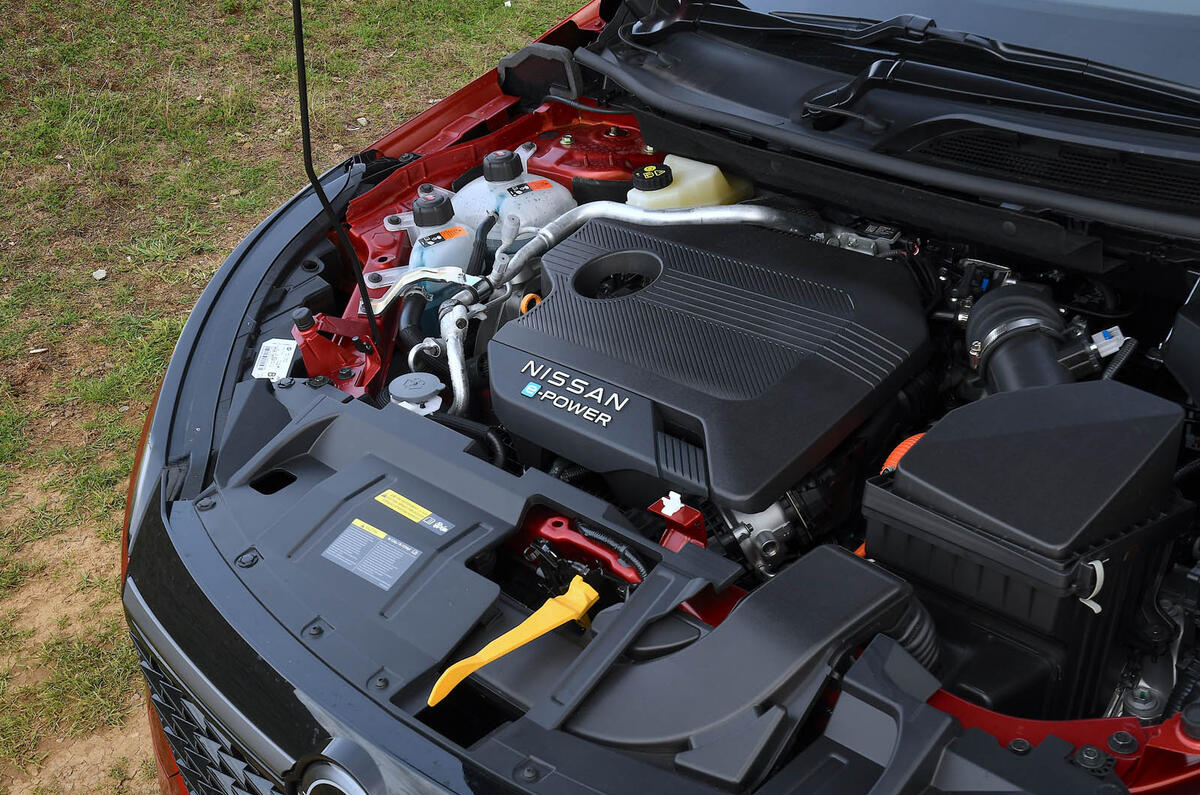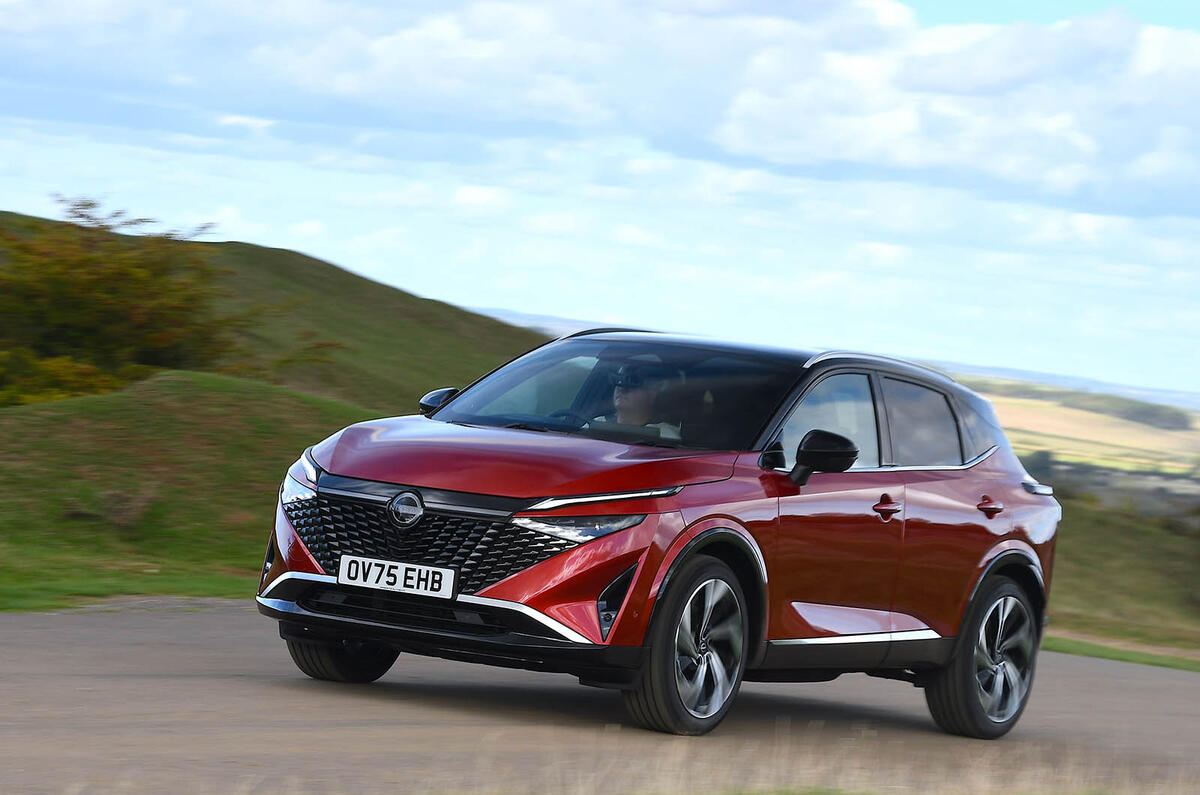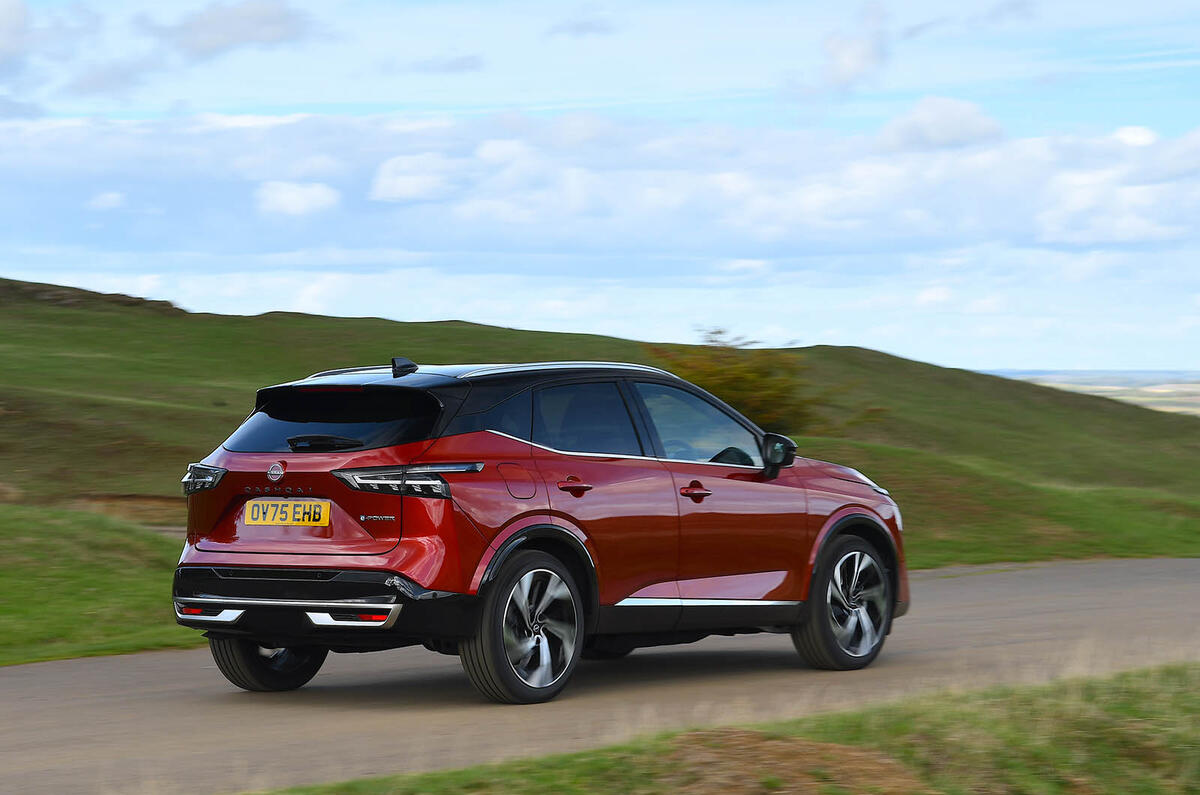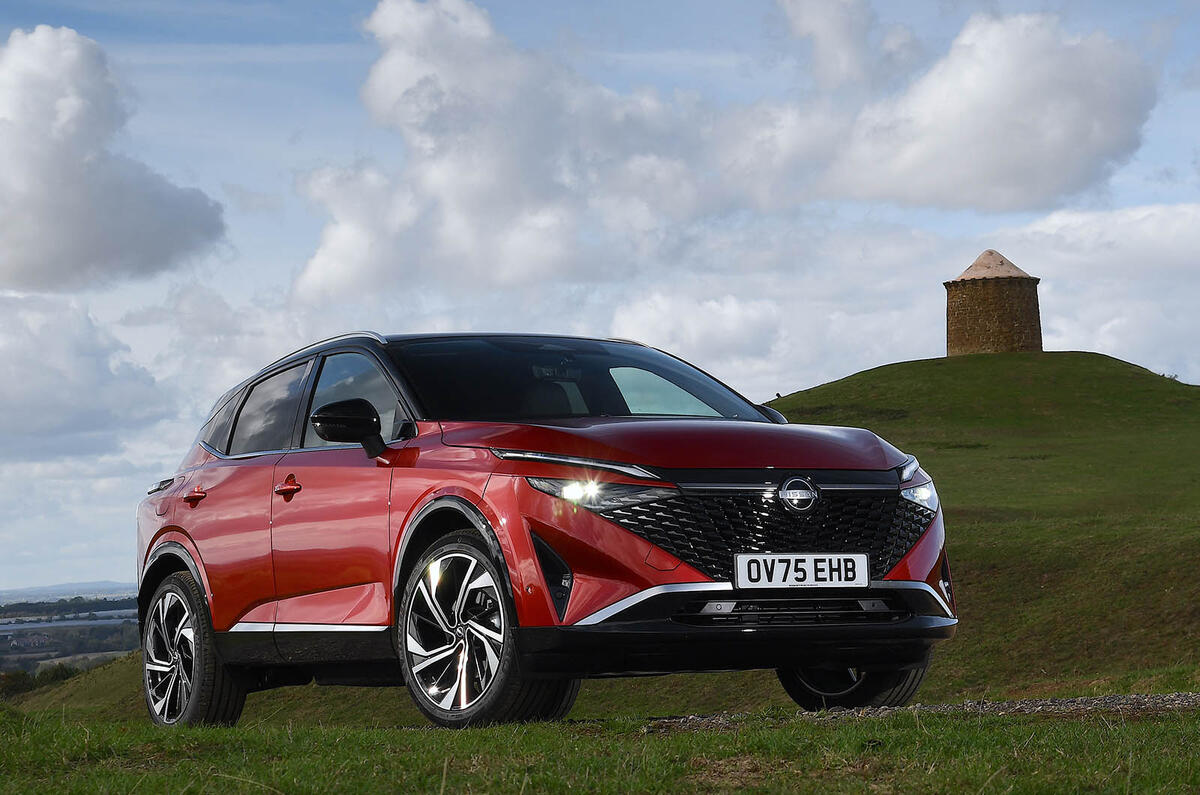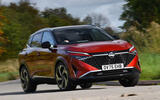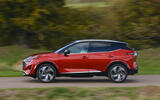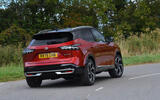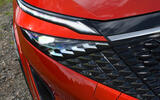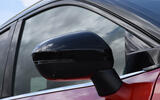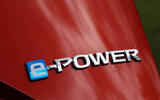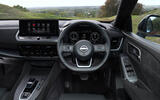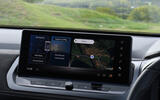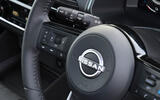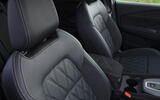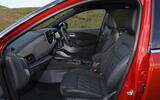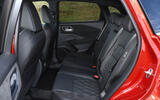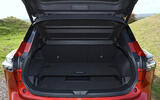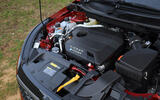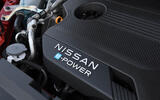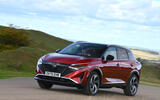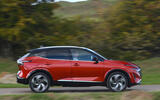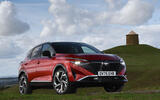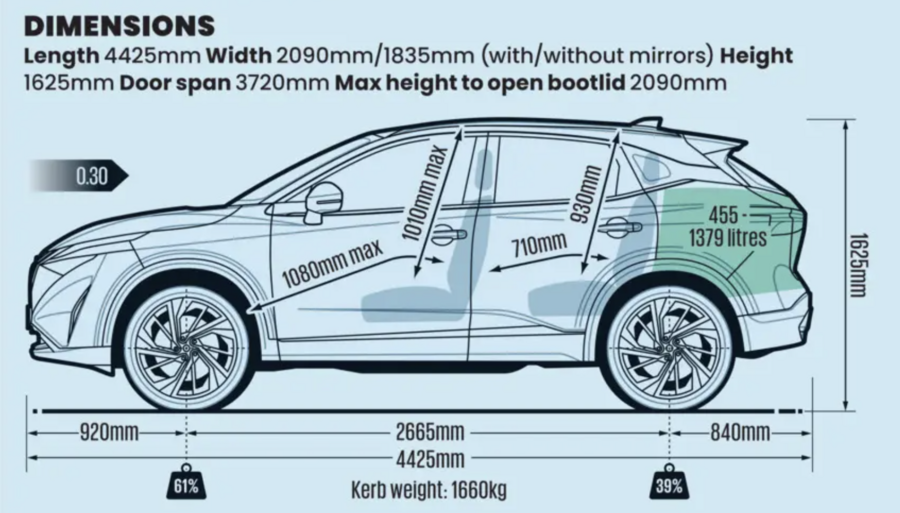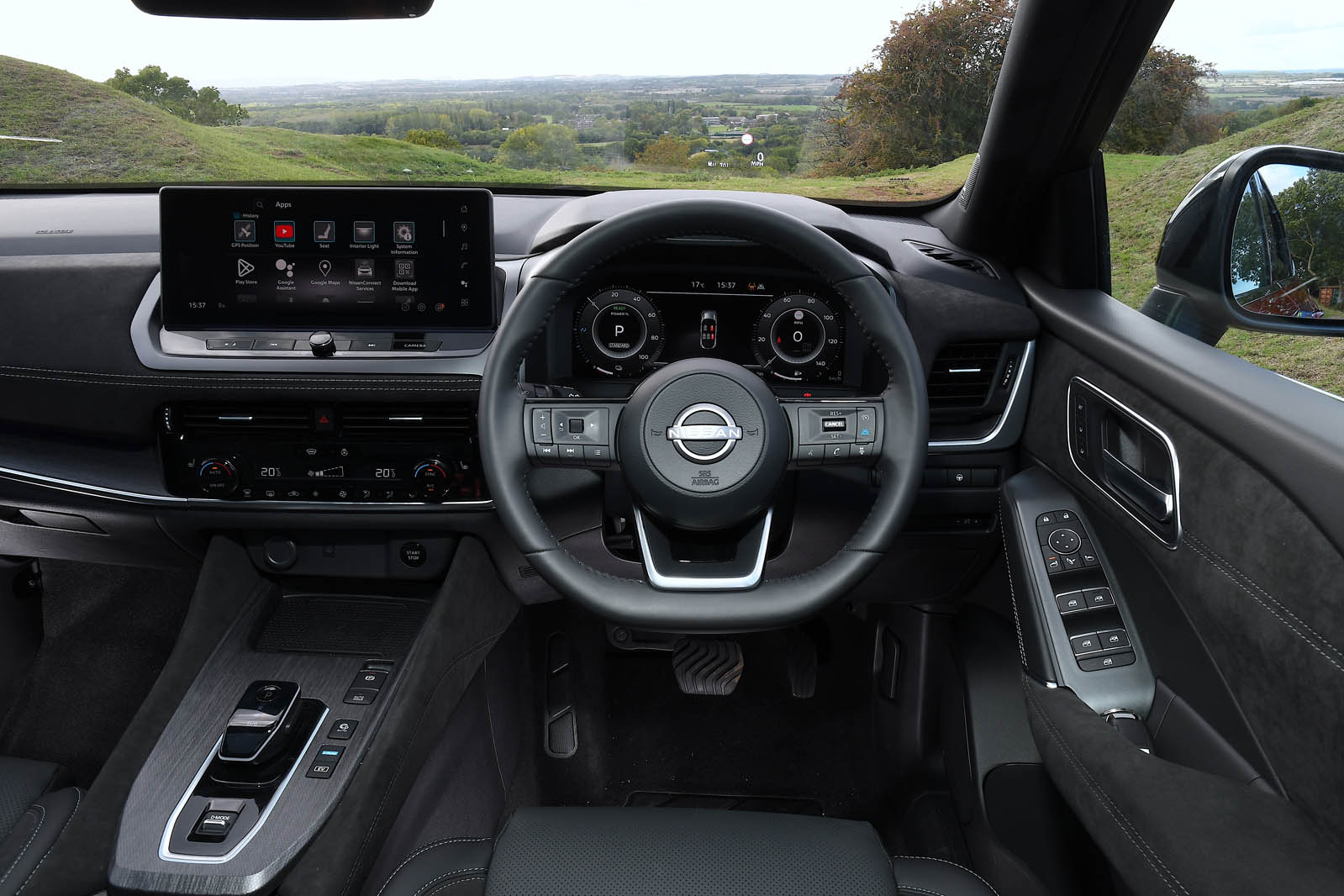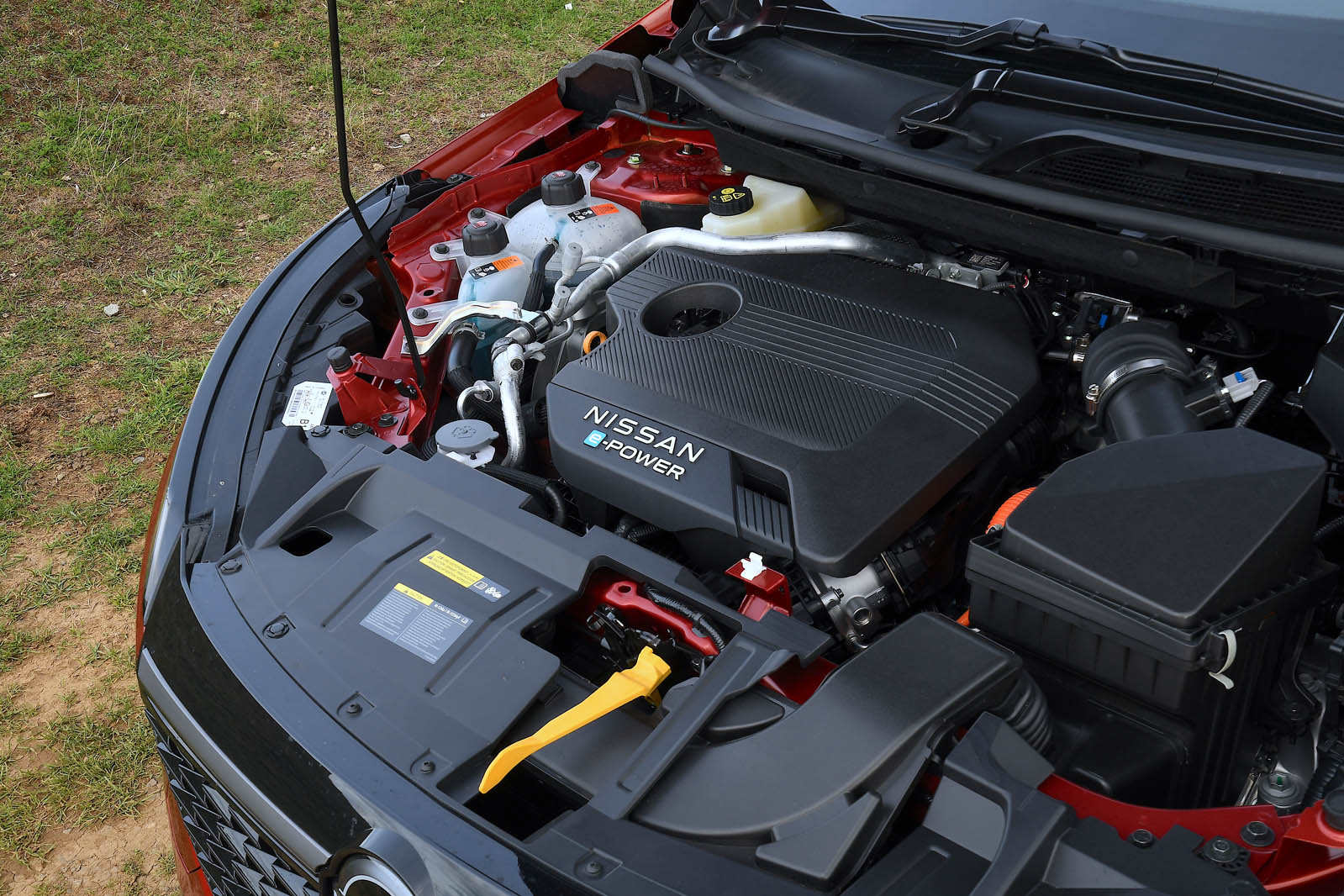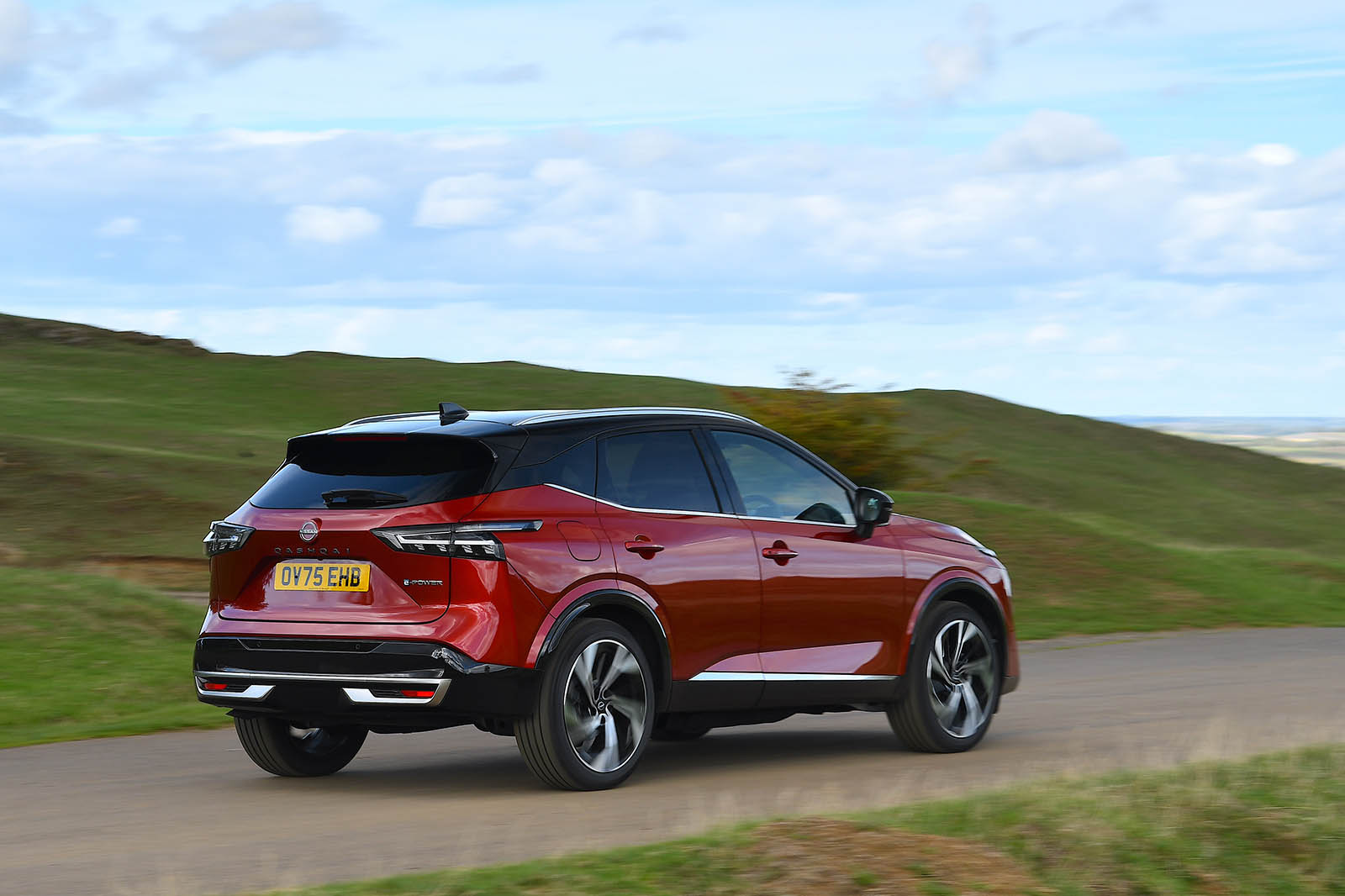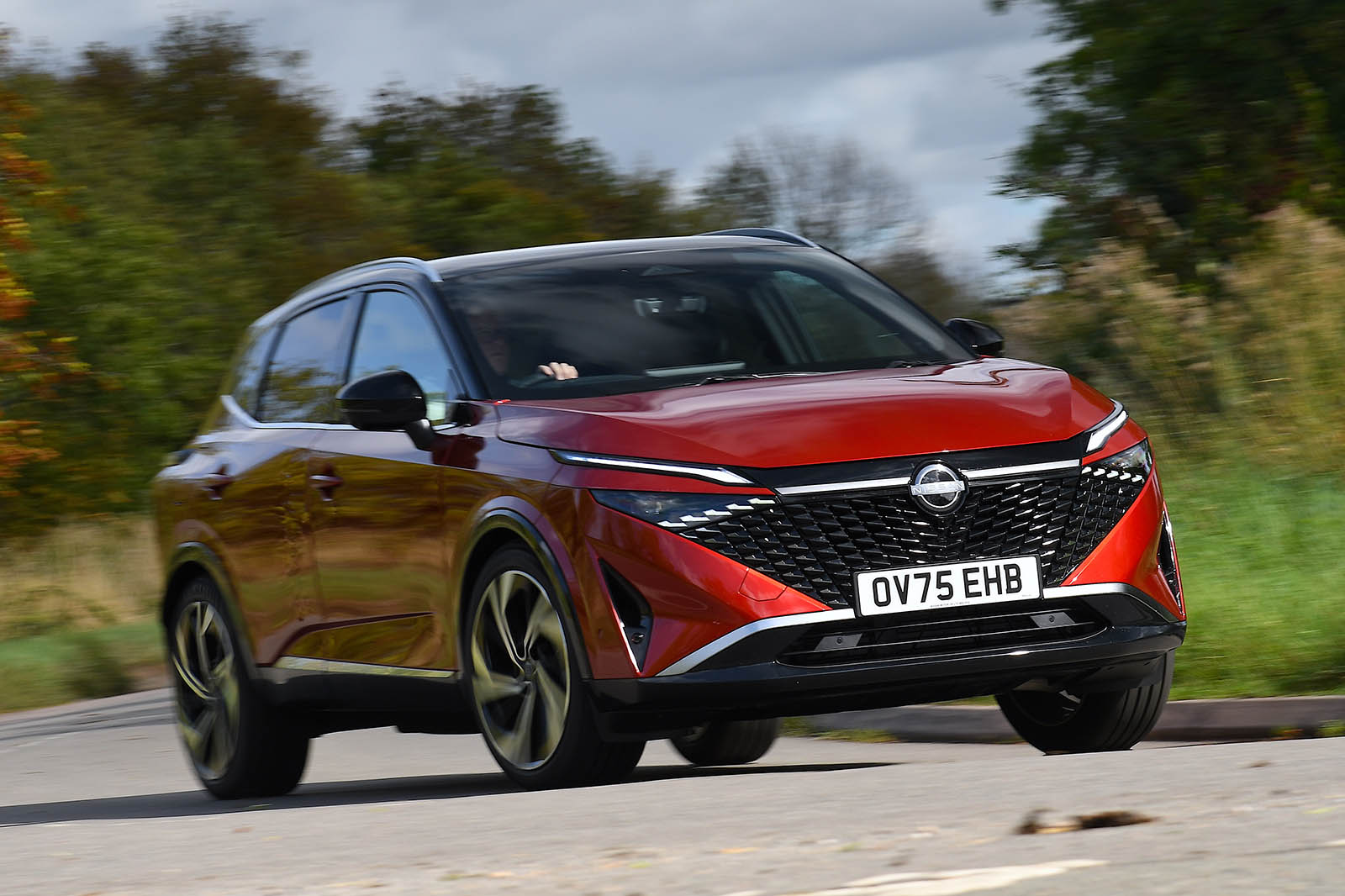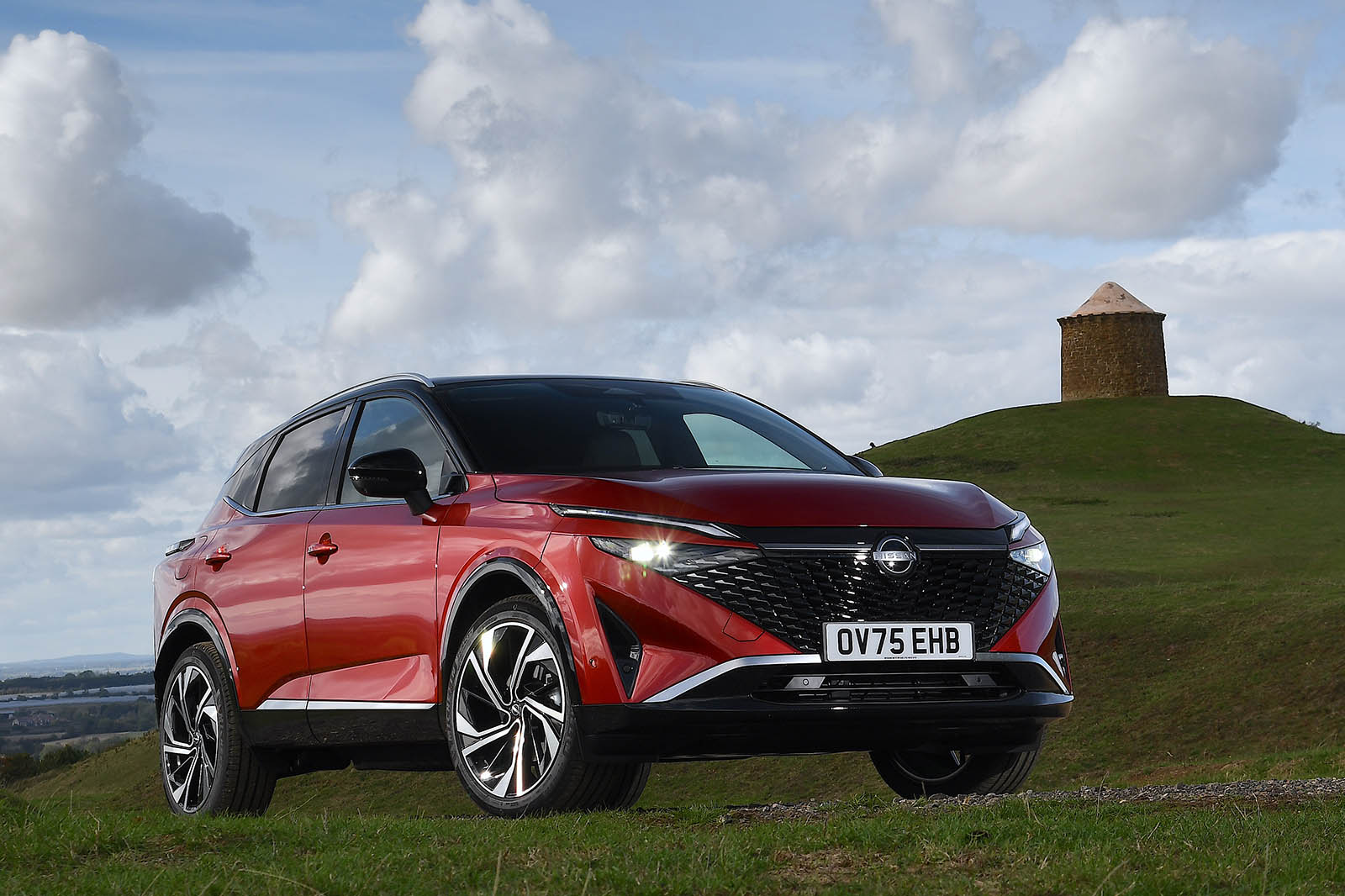Look carefully around the Qashqai e-Power and you will notice plenty of refinement-boosting touches. These include foam padding inside the front wing cavities to prevent noise transmission via the wheel arches, and an extra layer of foam carpeting under the boot floor. Clearly, one of Nissan’s core aims for this car was to improve its NVH (noise, vibration and harshness) performance.
And it has hit that target right on the bullseye. Quietness in normal running is a striking attribute of this car. Whereas the previous e-Power, like other hybrids, was refined when driven under electric power but quickly became less so when the engine had work to do, the new one has a convincing hush about it even when the turbocharged triple is spinning.
That’s partly because it has a smoother and better-isolated engine anyway, but also because that unit can produce what torque is needed at lower revs than the old e-Power’s could. The combined effect of both factors was recorded by our decibel meter: the Qashqai generated 62dBA of cabin noise at a 50mph cruise, which is an impressive result especially given the 20in fitted wheels of our test car (Kia Sportage HEV: 63dBA, Peugeot e-3008 Allure: 64dBA, BMW X1 23i: 66dBA). Pick a car on smaller rims and you can expect it to be quieter still.
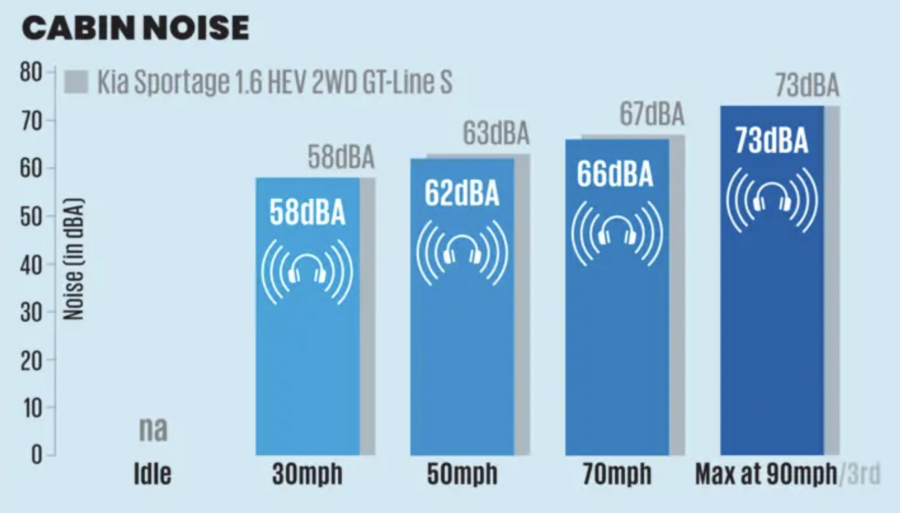
A distant three-cylinder chunter is all you really detect of the engine during everyday motoring. Except when you need full power, at which point there is a small but detectable delay in powertrain response while that engine spins up to sufficient revs to supply the voltage.
You wouldn’t call this elastic band effect, because the car’s electric drive motor has plenty of power and torque, for open-road acceleration and even normal overtaking, even before the engine hits peak power. Acceleration is dampened a little from rest – note how much quicker the car is from 30-70mph than from 0-60mph. But, otherwise, available power is plentiful, even at motorway speeds, and pedal response is very crisp and linear.
There’s enough torque here to be able to maintain a decent cruising speed using 25% throttle or less. When you do, the engine only runs intermittently, to top up the battery, which is typically maintained at between 50% and 70% charge.
The car’s one-pedal drive mode doesn’t quite bring it to a stop in traffic without any braking input, as an EV might, but it does allow you to choose between de facto strong and weak regenerative braking modes. Brake pedal progression and feel is good in normal driving, becoming slightly soft in more intensive use.
Our test car stopped consistently well, and strongly enough, in the dry. Its Michelin Primacy tyres struggled somewhat for mechanical grip on Horiba MIRA’s wet surfaces, however. Their apparently hard compound combined with standing water to cause the anti-lock brakes to work a little noisily, though just about effectively enough.
As regards other powertrains, the Qashqai's 1.3-litre, 156bhp mild hybrid powertrain makes a slightly ordinary, though passable, impression from the driver’s seat.
It's surprisingly torquey at bumbling revs once the turbocharger’s spooled up - though it’s not the smoothest engine when engaging on the clutch, the electric assistance failing to cover for the turbocharged engine’s momentary lethargy. Drivability is good, once the motor’s pulling - but it doesn’t respond instantly, nor rev particularly keenly beyond 4000rpm, and becomes coarser and more thrashy at high revs than you’d imagine based on its better manners at lower revs.
The X-tronic CVT, meanwhile, masks the engine’s off-boost torpor but suffers from an irritating surge in acceleration at more than a quarter throttle that’s disproportionate with your inputs. It also feels poorly integrated with the start/stop system, sending a judder through the driveline each time the engine cuts in and out.





